Use the Polygon object tool to create a series of connected lines that form a closed or open object. You can specify how the vertices of the polygon should be connected by selecting one of the options from the Polygon Mode box.
To draw a polygon:
The Polygon menu appears.


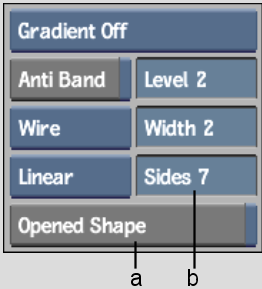
(a) Polygon Mode box (b) Sides field
| Select: | To: | |
|---|---|---|
| Linear | 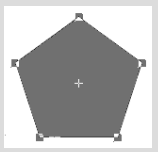 |
Use straight lines to join the vertices of the polygon. |
| Cardinal |  |
Use a smooth curve that passes through the vertices of the polygon. |
| Bspline | 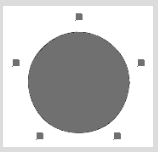 |
Use a very smooth curve that passes on the inner side of the vertices of the polygon. |
| Bezier | 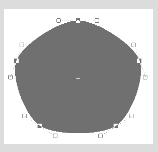 |
Use Bezier curves. Each vertex of the polygon has a tangent with two tangent handles. In Edit mode, you can move the tangent handles to adjust the slope of the polygon. See Editing a Bezier Curve. |
The minimum number of vertices for a polygon depends on the type of interpolation used. A polygon should have at least three vertices when using Linear interpolation, or four when using Cardinal or Bspline interpolation. The maximum number of vertices is 255. A polygon can be concave.
The polygon is drawn on the image.
Rubber banding is the default setting for drawing polygons and lines. This means that a vertex is added to the polygon only when you press and release the cursor.
To draw a polygon with multiple vertices, disable the Rubber Banding button in the Setup menu. When you drag the cursor while drawing a polygon or line, vertices are drawn on the image.


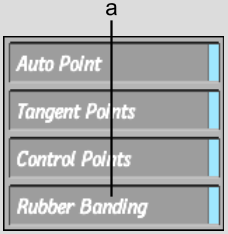
(a) Rubber Banding button
Draw regular polygons using the Sides field and the E key. A polygon can have three or more sides. This enables you to draw a triangle or a square based on the centre point of the object.
To draw a regular polygon:
This is the centre of the polygon.
The polygon is drawn on the image.